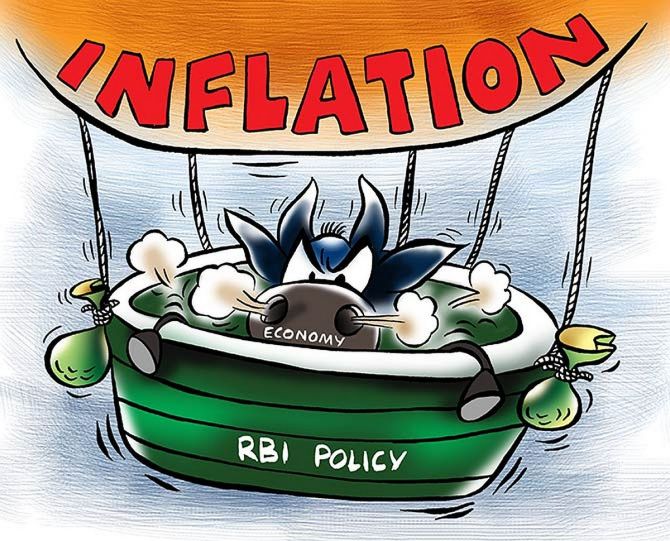Amid a debate on the basis of a monetary policy stance, one may be curious enough to know how non-food retail inflation has behaved over the years in India.

Let the eager souls catch a glimpse of facts.
In the past 10 years, non-food inflation came down below 4 per cent on two occasions — pre-Covid period of 2019-20 and now in the first four months of the current financial year (FY25).
It remained a tad above 4 per cent during 2023-24.
It touched the peak of 6.65 per cent a year before.
It was also quite elevated at 6.61 per cent in 2021-22.
It also remained over 5 per cent in 2018-19 and Covid-hit year of 2020-21.
Food inflation, on the other hand, was at over 6 per cent in 2022-23 and over 7 per cent in 2023-24 as well as the first four months of the current financial year.
One may wonder as to why the monetary policy committee (MPC) did not cut the repo rate in 2023-24 and in its first three meetings in 2024-25 since non-food inflation was quite low.
Such a thinking was echoed by the Economic Survey 2023-24, saying monetary policy cannot influence supply-driven food inflation but it was junked by the Reserve Bank of India (RBI).
If monetary policy cannot influence food inflation, why should it not subject its stance to the behaviour of non-food inflation?
To a query over this, former chief statistician Pronab Sen says MPC has to take a holistic view on the overall retail inflation since an Act of Parliament mandates it to do so.
The RBI Act of 1934, as amended, gives the Union government the authority to set an inflation target every five years in consultation with the central bank.
The target was set at 4 per cent with a margin of 2 per cent on either side for a period of around five years starting from August, 2016.
The government again set the same target for the next five years beginning April, 2021.
Monetary policy is expected to aim at maintaining price stability while also promoting growth.
Sen, however, agrees with the Economic Survey's argument that monetary policy cannot influence food inflation.
But MPC can prevent food inflation from spilling over to other parts of the retail inflation, he says.
Jayati Ghosh, professor of Economics at the University of Massachusetts Amherst (USA), says that food inflation, especially at present, is unlikely to reflect overheating. Even so, it cannot be excluded from the purview of economic policy, she points out.
“It is unlikely that demand is the reason for the current rise in food prices. People do not spend more on basic food items when incomes rise,” she says.
Ghosh explains that tighter monetary policy is unlikely to address this rise in food prices.
“For the RBI, it is okay to not look at food inflation because raising interest rates is not going to have a significant impact on it.
"But the government cannot ignore food inflation because that is a critical concern for most of the people,” she adds.
Why only food inflation, many experts were for long in favour of excluding fuel inflation as well for deciding the monetary stance.
This part of inflation is called core inflation.
Core inflation declined to 4.38 per cent in 2023-24 from over 6 per cent in the previous two years.
It further came down to 3.22 per cent in the first four months of FY25.
"If the RBI wants to manage demand in the economy through monetary policy, then it should be looking at the overall inflation and core inflation," Ghosh says.
Sen says fuel prices are influenced by global developments and government measures.
Change in the repo rate cannot impact these prices, he adds.
Monetary policy does not have only a repo rate under its command.
It has a wide range of tools such as cash reserve ratio, statutory liquidity ratio, open market operations, etc. to influence liquidity in the system.
These measures could be used to prevent the spread of food and fuel inflation to other parts of inflation, he says.
The Economic Survey for 2023-24 suggested that the MPC consider an inflation-targeting framework excluding food, as higher food prices are often supply-induced rather than demand-induced.
“Short-run monetary policy tools are meant to counteract price pressures arising from excess aggregate demand growth,” it noted.
However, RBI governor Shaktikanta Das recently said that with persistent food inflation and pick-up in household inflation expectations, monetary policy needs to be vigilant of the likely spill-overs of food price pressures.
“... with food inflation pressures showing little signs of abatement in the near-term, and household inflation expectations picking up, monetary policy has to remain vigilant to potential spill-overs of food price pressures to the core components," Das said, according to the minutes of the MPC meeting held from August 6 to 8.
At that meeting, the six-member MPC, with a 4:2 majority, left the repo rate unchanged at 6.5 per cent for the ninth consecutive time as high food inflation continued to remain a risk.
The two dissenting members were Ashima Goyal and Jayanth Varma.
The Economic Survey for 2023-24 suggested that the MPC consider an inflation-targeting framework excluding food, as higher food prices are often supply-induced rather than demand-induced.












 © 2025
© 2025